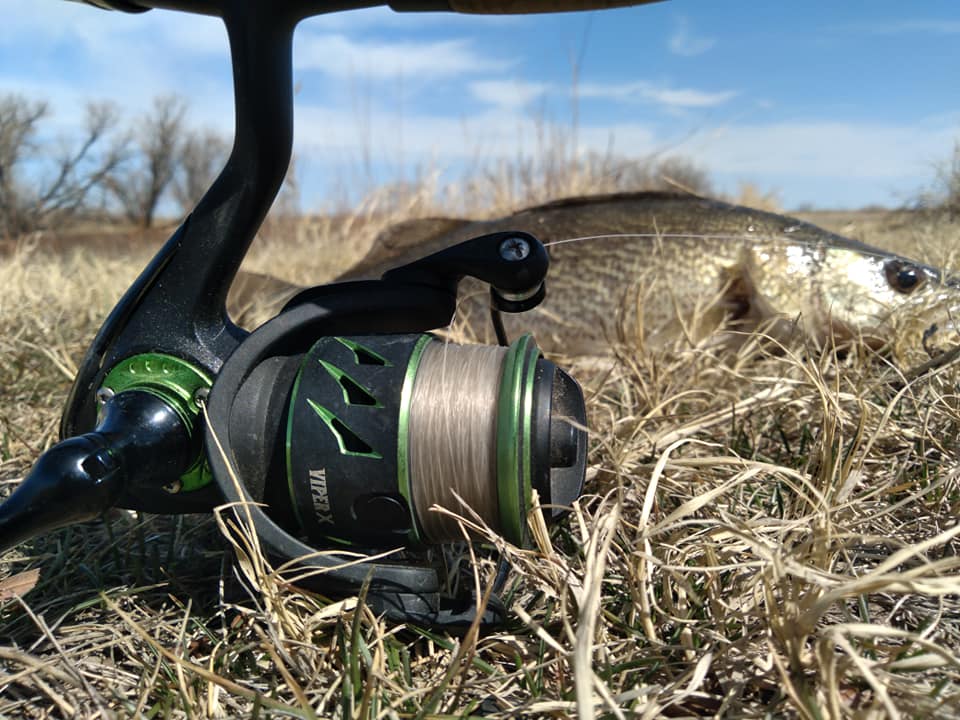Moving up the product line in this series of reviews, the Piscifun Carbon X is the next model reel priced just above the Viper X. Let's see how the price stacks up against value. I measure every reel against five criteria to be consistent, especially when comparing different models in different price categories. Following a standard process makes it easier to determine which spinning reel is the best for the price. I used the 3000 series model as the baseline for this review.
Before considering any model, assess which species of fish you target. The spinning reel model should offer the entire range of sizes for the species you are likely to pursue. The reason is simple. By sticking with the same model, you do not have to readjust and relearn the "feel" as you move up in size, which is also huge for maintenance. You can learn the ins and outs of its construction and keep it working for years. Since the Carbon X spinning reel has model sizes ranging from 500 to 4000, it has the options most anglers will use. However, unlike the Viper X, it does not have the popular 5000 size popular with surf anglers. Look at the less expensive, saltwater-rated Piscifun Captain spinning reel for models beyond the 4000 size for surf and deep-sea fishing.

Spool Design:
Piscifun tweaked the long-cast spool design used in the Flame and Viper X reels. Instead of the earlier "X shape spool," the Carbon X uses a "hollow nest" design featuring an angled top to allow the line to move quickly and smoothly off the reel. I ran a casting test to see if the improvement allowed me to achieve more distance. I was amazed to discover that I could throw a one-ounce weight over seven feet farther than I could on the Viper X using the same rod and line (Piscifun Serpent rod, 6'10", medium power, extra fast action) – achieving a total distance of sixty yards. If you cast one hundred times on a fishing trip, exposing your lure to another seven hundred feet of water and, potentially, more fish.
Both reels use aluminum rather than graphite for the spool material. Graphite spools are always a wrong choice since they might crack and deform as the line tightens through use – primarily if you use monofilament since it may shrink. Like the Viper X, the Carbon X has a "grippy" rubberized braid grip that makes it easy to start spooling line onto the reel.
As I loaded the reels, I verified that the line started precisely at the base of the spool and ended at the top with similar precision. In fact, I was surprised that Piscifun included two small washers with reels to allow the user to make minor adjustments. I never needed to use these on any of the five Piscifun reels I tested. I could detect no wobble around the shaft, which allows the bail to lay a line evenly across the length of the spool to ensure it exits smoothly in a cast.
Frame:
Piscifun overachieved in reducing the weight of the Carbon X. Instead of using the graphite featured in the Flame and Viper X, the Carbon X uses carbon fiber for the body, rotor, and side plate. Not only does carbon fiber dramatically reduce its weight, but it will not corrode. It is a critical feature since the Carbon X reel is saltwater rated! The reel has a brass roller bearing instead of steel and a reinforced, anti-corrosion stainless steel main shaft 20% larger than the Viper X. The Carbon X includes double bearings and a high-quality zinc alloy drive gear machined to a higher standard for smoother operation. The direct drive screw-in aluminum handle with a large EVA knob rounds the construction upgrades. Both have a heavy-duty bail, with the Carbon X offering a brass roller that is less likely to corrode.

Smoothness:
Like the Viper X, the Carbon X spinning reel has ten bearings and one anti-reverse bearing. Reels with more than four bearings usually have smooth action. The more bearings, the better. However, the bearings' quality distinguishes a good reel from a poor one. A reel with ten poorly made bearings is not as good as a reel with fewer high-quality ones. Both reels use shielded stainless-steel bearings, with the Viper X being double-shielded, which is a fine point. Many reels advertise stainless steel bearings; stainless does not mean what we think it means. There are different grades of stainless steel, and while they are resistant to corrosion under normal conditions, they can rust when exposed to chemicals (think cleaning solvents), salt, grease, or even heat. Damage occurs even faster if the stainless steel is made of cheap ferritic stainless (chrome steel). Always look for reels with shielded bearings.
Performance:
Like the Viper X, the gear ratio for 2000, 3000, and 4000 Carbon X models is a fast 6.2:1. For every turn of the handle, the spool rotates 6.2 times. You can always go slower, but a high gear ratio allows rapid and efficient retrieval when that is the appropriate way to work your lure. In addition, the fast ratio enables you to take the slack out of the line quickly after casting.
Another improvement over the Viper X is the drag. Like the Viper X, the drag on the Carbon X 3000 model spinning reel is rated at 22 pounds but adds oversized carbon fiber drag washers for better performance. Carbon fiber-based systems are infinitely adjustable, easy to maintain, will not slip, and rarely get flat spots. Both use a rubber ring to seal the drag to prevent dirt and grit from entering.
The drags on both models incorporate gentle clicks that allow you to hear how much you change the drag when working a fish. It is essential if you set your drag loosely to allow the fish to pick up your lure or bait without feeling significant resistance, but you need to activate the drag for the hook-up and retrieval. The clicks on the Carbon X are slightly louder than the Viper X – an improvement I welcomed.

Weight:
If weight is essential, the 3000 model Carbon X shaves 0.6 ounces off the Viper X and weighs only 8 ounces. I checked how the Carbon X compares to the Penn Battle III saltwater reel, which is slightly less expensive. The Penn 3000 series weighs 11.6 ounces because it has an aluminum body instead of carbon fiber and only has six bearings with a maximum drag capability of fifteen pounds.
Overall, the Piscifun Carbon X is a higher-end spinning reel than the Piscifun Viper X, with a more robust and lighter carbon fiber construction, a more advanced drag system, and upgraded internal components. While it costs more than the Viper X, the premium features make the Carbon X spinning reel one that will last.














